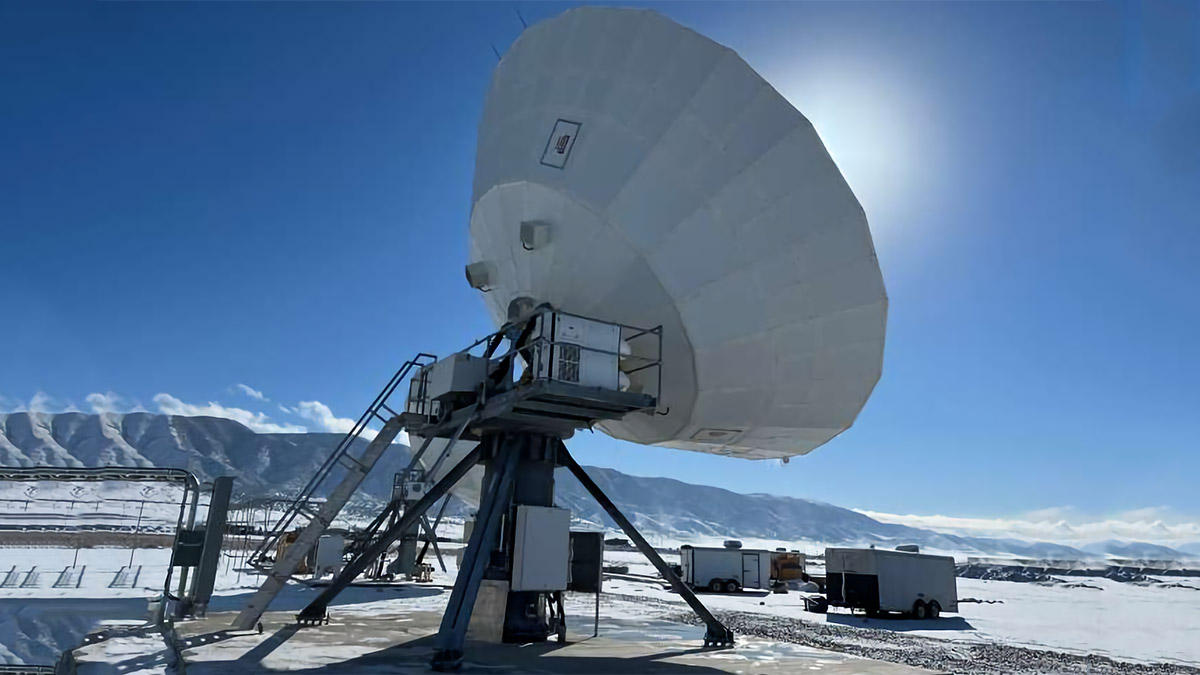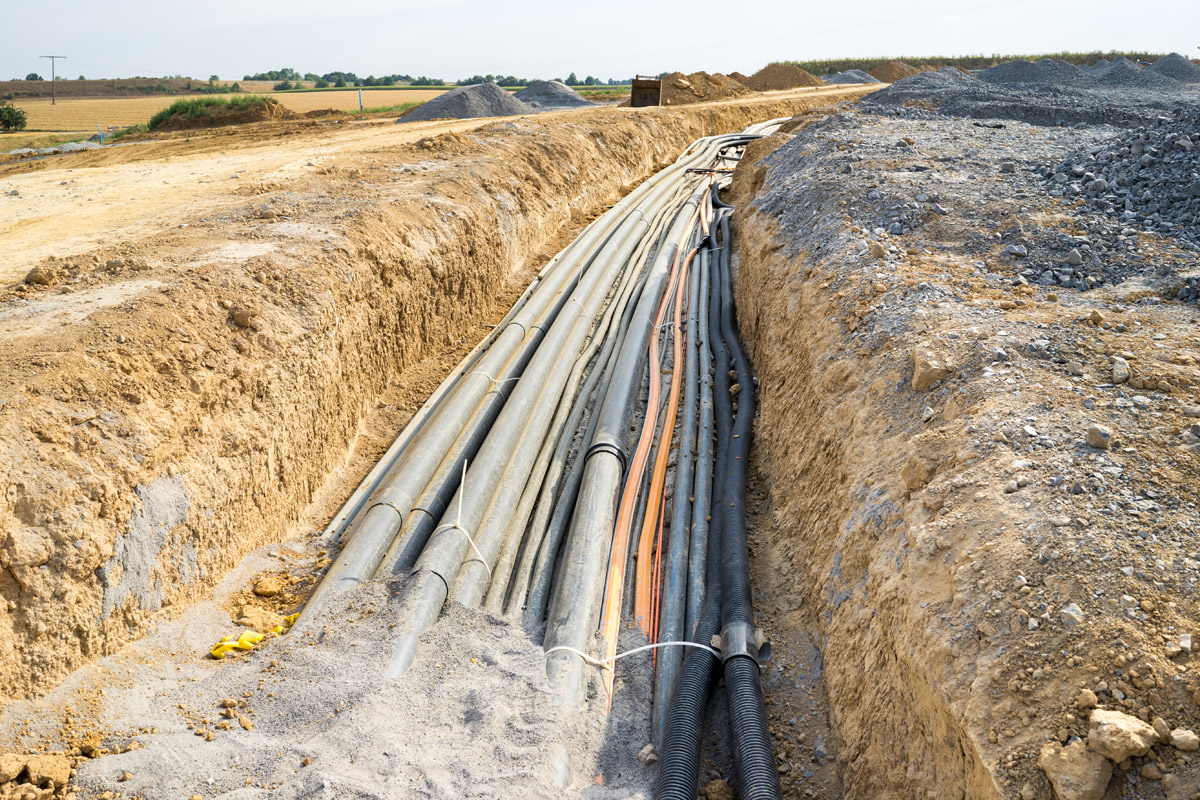 This image shows the Pacific Dataport antenna located in Utah to provide broadband connectivity to rural Alaska. The antenna is part of PDI’s multi-service Aurora Network featuring connectivity through an Astranis software-defined MicroGEO satellite.
This image shows the Pacific Dataport antenna located in Utah to provide broadband connectivity to rural Alaska. The antenna is part of PDI’s multi-service Aurora Network featuring connectivity through an Astranis software-defined MicroGEO satellite.
WASHINGTON — In response to its own report that high-speed broadband services are not being deployed in a timely manner to underserved and unserved populations, the U.S. Federal Communications Commission (FCC) in March raised the standard for high-speed fixed broadband.
The new benchmark, with download speeds of 100 megabits per second and upload speeds of 20 Mbps, is intended to spur internet providers to extend their infrastructures to deliver broadband to the millions of Americans that “still do not have the broadband they need to fully participate in modern life,” as FCC Chairwoman Jessica Rosenworcel said in a statement.
However, the new benchmark, and an emphasis on latency, could also lead to the exclusion of satellite services from federal funding programs. The revised speeds match what is required to qualify for federal broadband subsidy programs such as the National Telecommunications and Information Administration’s (NTIA) Broadband Equity Access and Deployment (BEAD) Program and several Universal Service Fund programs.
The FCC vote was split along party lines, with the two Republican Commissioners dissenting. “The 100/20 Mbps requirement appears to be part and parcel of the Commission’s broader attempt to circumvent the statutory requirement of technological neutrality,” Commissioner Brendan Carr said in a statement. The report ignores satellite broadband services, especially Starlink, he added.
Who Gets Left Behind?
The FCC’s omission of satellite in its coverage metrics and discussions, combined with past decisions about funding satellite services and indications of future revisions of the definition of broadband speeds, raises questions about whether the federal government is tilting the playing field to favor terrestrial internet providers in the market and in the competition for federal subsidies.
The FCC’s position that broadband has transitioned from a luxury to a necessity for all Americans is valid, but the approach needs clarification, said Katherine Gizinski, CEO of satellite consultancy River Advisers. The internet requirements for populations in the most rural areas are vastly different from metro areas. “Is the goal to make sure that everyone connected has very fast connectivity or is the goal to bring some level of connectivity to everyone, raising the floor for rural areas with the poorest connectivity? These are two very different behaviors to incentivize and, in some cases, a raised benchmark may leave regions unconnected for years to come.”
“There is nothing wrong with the FCC elevating the expectation of what broadband is,” said Patricia Cooper, President and Founder of Constellation Advisory, LLC. “There is a laudable reason to raise the standard. We need higher quality service as how we use
the internet changes. But it is valuable to think of other programmatic changes and what they are in response to.”
Satellite industry officials also are wary of whether the FCC’s strategy will spur the terrestrial fiber companies to extend their networks – or if they even can.
“When it comes to the NTIA and USDA [U.S. Department of Agriculture] spending money on new broadband connectivity, the sole focus is on fiber,” said Shawn Williams, VP of Government Affairs and Strategy at Pacific Dataport, a satellite communication company seeking to bridge the digital divide in Alaska using Astranis Space Technologies MicroGEO Ka-band satellites.
Deploying fiber in Alaska can cost as much as $125,000 per mile due to challenging geography, according to Williams. “Often, the nearest road can be hundreds of miles from your residence or fish camp. You might even be on the high seas or up a river. A space-based solution, whether GEO or LEO, is a lot more cost-effective these days for rural America.”
FCC Considering Symmetrical Upload-Download Speeds
The FCC’s approach to using latency measurements in its funding decisions also tip the scales further against satellite, experts said.
“The variety of broadband funding programs across the federal government have never favored satellite – and now look to be favoring traditional terrestrial broadband providers even more,” Gizinski said.

“As they raise the standards again, this is the evolution of elevated expectations,” Cooper said “This is not surprising. But is it part of natural decision-making or is it a cloaked way of elbowing out the threat of satellite again?”
A concern for satellite down the road is the FCC report also sets a long-term goal of raising the benchmark to 1 Gbps. This may also be paired with a requirement to provide upload speeds that match download speeds, which advocates say is needed to support growth in services such as remote work, remote learning and telemedicine.
“The symmetrical up-down requirement is a bit more suspicious, because most people don’t have symmetrical up-down needs,” Cooper said.
Symmetrical broadband service may be needed for corporations and small businesses, but households, even those using video streaming, video calls and gamine, rarely have a need for download speeds of 1Gbps, much less have a requirement for matching upload speeds.
“The satellite industry must take a stand and demand that policymakers do not require excessive upload speeds that are truly unnecessary. When we see symmetrical service being talked about, that’s when satellite should be concerned – and it is,” Williams said.
Getting Satellite Off the Sidelines
Along with continuing to innovate on the technology side, the satellite sector must continue to engage with regulators to tout its case and prevent terrestrial broadband providers from defining what the satellite sector can provide, industry representatives said.
“The satellite industry shouldn’t ignore what is happening here, and it’s important to speak with a clear, collective voice,” Gizinski said. “Satellite connectivity offers tremendous value, in both the ability to rapidly deploy years ahead of fiber build-outs, and the ability to address rural geographic regions where fiber is not economical. A one-size-fits-all standard may not be the most appropriate solution given the geographical diversity and land mass to cover.”
There are also market changes that could benefit the satellite sector and unserved populations. More LEO constellations such as OneWeb and Kuiper coming online to join Starlink could continue to drive down the cost and make satellite a more economical choice. Satellite could also create multi-orbit networks that provide even more competition with terrestrial services.
“It’s critical for providers to be able to use all the tools in the toolbox for our most remote residents. The industry has decided, in some cases, the best solution is hybridization,” Williams said of the trend to combine multiple orbits and multiple providers into a “hybrid” network. Pacific Dataport first tested this concept about three years ago in Anchorage, connecting LEO and GEO networks to the same router. “It worked great,” Williams continued. “Now we see industry mergers and these hybrid networks will be optimized to create an extremely strong network.”
Explore More:
Podcast: Software-Defined MicroGEO, Integrated Ground and a Network for Rural Alaska
Can LEO Broadband Truly Succeed in Developing Countries?
Market Dynamics Driving Broadband Providers to Work Together
US to Spend $42B on Broadband Equity: Will Satellite Be Included?
Podcast: Natural Disasters, Endless Grit and Closing the Digital Divide in APAC
